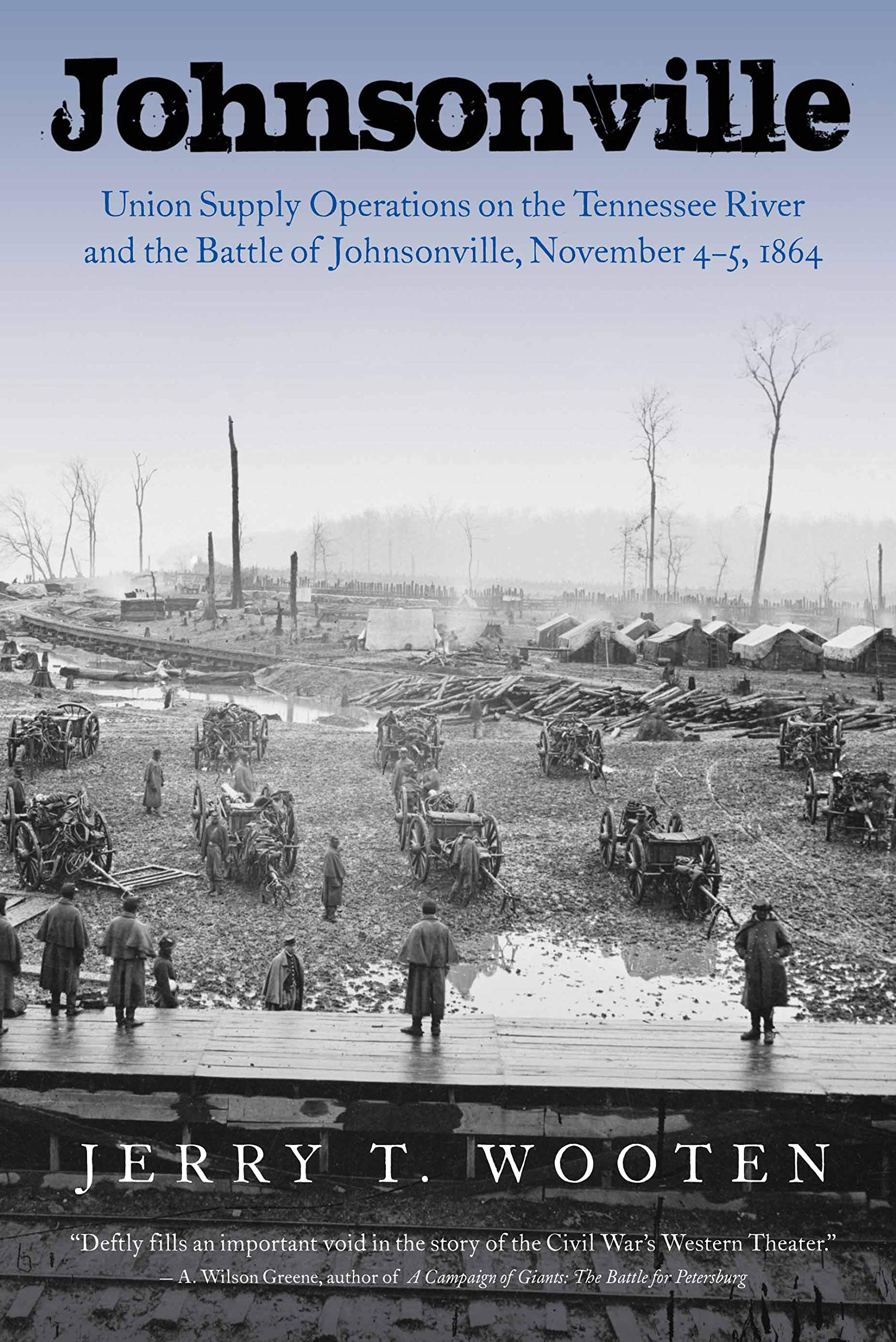Book Review: Johnsonville: Union Supply Operations on the Tennessee River and the Battle of Johnsonville, November 4-5, 1864
Johnsonville: Union Supply Operations on the Tennessee River and the Battle of Johnsonville, November 4-5, 1864. By Jerry T. Wooten. El Dorado Hills, CA: Savas Beatie, 2024. Softcover, 189 pp. $19.95.
Reviewed by Patrick Kelly-Fischer
It can be difficult for modern readers to comprehend the sheer scale of the Union war machine. In contrast to famous battles and campaigns, too little attention has been paid to the staggering logistical undertaking that was required to keep massive Federal armies in the field, particularly as they pushed further into vast territory of the Confederacy in the latter half of the war. That scant attention diminishes even further as you move into the Western Theater, and as you move north, away from the front lines.
In Johnsonville: Union Supply Operations on the Tennessee River and the Battle of Johnsonville, November 4-5, 1864, Jerry Wooten endeavors to fill a significant hole in that picture. His recently published first book focuses on the construction and operation of a massive Union supply depot along the Tennessee River, the eventual battle for Johnsonville, and its postwar legacy.
Having served as the Park Manager at Johnsonville State Historic Park for several years, Wooten is well-equipped to speak to the site’s story. He is also one of the first to even attempt to do so. Despite the tens of thousands of books written about the Civil War, and the importance of Tennessee to the course of the war, Johnsonville has received virtually no attention until now.
Johnsonville is not simply a book about logistics. While the supply depot was significant in its own right, its story also offers a window into other important facets of the war effort. For being a relatively short work—a very readable 189 pages, including an appendix on the history of the U.S. Quartermaster’s Department—it covers a staggering range of topics. There’s something in here for just about everyone’s interests: naval combat, cavalry raids, United States Colored Troops, railroad construction, and more.
Wooten has organized the work chronologically. While he focuses primarily on the Civil War years, he starts by providing the context of early white settlement of the region, and continues the story through the aftermath of the war. Some of the topics do receive more minutely detailed coverage than most readers are likely to find interesting. That said, the overall work is noteworthy for the depth of its research, its careful attention to the facts on the ground, and the weight given to the vital-if-unsung role played by the men who built, guarded and commanded the extensive infrastructure that supplied Union armies throughout the war. Wooten has dug especially deep into local histories of the region, letters between participants, and the affidavits and testimony that followed the battle of Johnsonville.
Especially for long-time students of the Civil War, most battle and campaign studies do not contain a lot of mystery for the reader. They are likely to go in knowing the eventual outcome, and at least the rough outlines of what happened. While that in no way diminishes the importance of new scholarship on better-known battles and campaigns, Johnsonville is the rare book where most readers won’t already know what happens. Even for a topic as well-studied as the Civil War, there are still new stories to tell, and Wooten has found one well worth telling.


Thank you for the review. We really enjoyed publishing this completely unique study that truly broke new ground. It deserves to be widely read.
More details here: https://www.savasbeatie.com/copy-of-johnsonville-union-supply-operations-on-the-tennessee-river-and-the-battle-of-johnsonville-november-4-5-1864-pb/
Great review. I was not aware of this release and as someone who loves studying the Western Theater, I will definitely be adding this to my TBR list.
Thoughtful review of an excellent book that I read recently and visited years ago (a nicely preserved state park). I may be mistaken (in which case I will stand corrected), but this battle seems to be the only time Confederate cavalry (capably led by Nathan Bedford Forrest) defeated a Union naval force.
Thanks John. Off the top of my head, I think you’re right, at least to the degree it happened at Johnsonville. But there are so many quirky stories, especially in the Trans-Mississippi, I’m hesitant to say it never happened elsewhere.
Indeed, Patrick, it might have happened to David Dixon Porter’s fleet during the Red River Campaign in Louisiana in 1864 when his fleet was trapped in low waters. Thanks to the ingenuity of Colonel Dixon Bailey in engineering and constructing a dam to raise the river level, disaster was avoided.
Sorry. Colonel Joseph Bailey.
The ECM “Question Of the Week” posted this past Monday asked about “underrated” actions and events that influenced the War. This article makes me think of Union supply efforts throughout the conflict. I think the Union’s efforts and successes in providing for their forces and troops in the field remains vastly underrated.
That should read “ECW Question Of the Week”. Sorry.
The size of the Federal war machine – isn’t it so that the Government spent $1 million per day in 1860 dollars, every day, for four years to prosecute the war? Higher? Lower? In any event, a staggering outlay…
Something like that — by the end of the war, it was around $3.5 million per day. In contrast, the pre-war budget was more like $1 million per WEEK.
Wowzer. It tripled per day? Is there a final figure that is agreed upon? I guess I’ve estimated low…